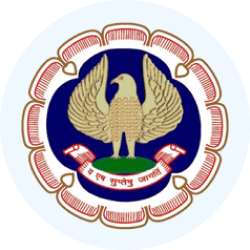CA Intermediate Exam > CA Intermediate Videos > Crash Course for CA Intermediate > Risk Assessment and Internal Control - 3
Risk Assessment and Internal Control - 3 Video Lecture | Crash Course for CA Intermediate
FAQs on Risk Assessment and Internal Control - 3 Video Lecture - Crash Course for CA Intermediate
| 1. What is the purpose of risk assessment in internal control systems? |  |
Ans. The purpose of risk assessment in internal control systems is to identify, evaluate, and prioritize risks that may affect the achievement of an organization's objectives. It helps organizations to understand potential threats and vulnerabilities, enabling them to implement appropriate controls to mitigate those risks. By assessing risks, companies can allocate resources effectively, enhance decision-making, and ensure compliance with relevant laws and regulations.
| 2. What are the key components of an effective internal control system? |  |
Ans. An effective internal control system typically consists of five key components:
1. Control Environment: The foundation that sets the tone for the organization, including governance and ethical values.
2. Risk Assessment: The process of identifying and analyzing risks that could prevent the organization from achieving its objectives.
3. Control Activities: The policies and procedures that help ensure management directives are carried out and risks are mitigated.
4. Information and Communication: Systems that facilitate the flow of information necessary for effective decision-making and operation.
5. Monitoring Activities: Ongoing evaluations and audits to ensure that controls are functioning as intended and to make necessary adjustments.
| 3. How can organizations identify potential risks during the risk assessment process? |  |
Ans. Organizations can identify potential risks during the risk assessment process through various methods, including:
1. Brainstorming sessions with key stakeholders to gather insights on possible risks.
2. Reviewing historical data and past incidents to identify patterns and trends.
3. Conducting surveys and interviews with employees to understand their perspectives on risks.
4. Utilizing risk assessment frameworks and checklists to systematically evaluate areas of concern.
5. Engaging external experts or consultants to provide an objective assessment of risks.
| 4. What role does monitoring play in the internal control framework? |  |
Ans. Monitoring is a critical component of the internal control framework as it involves ongoing evaluations of the effectiveness of internal controls. It helps organizations to:
1. Ensure that control activities are operating as intended and are effective in mitigating risks.
2. Identify any deficiencies or areas for improvement in the internal control system.
3. Facilitate timely adjustments and enhancements to the controls based on ongoing evaluations.
4. Ensure compliance with regulations and standards, thereby promoting accountability and transparency within the organization.
| 5. What are the consequences of inadequate internal control systems? |  |
Ans. Inadequate internal control systems can lead to several consequences, including:
1. Increased risk of fraud and financial misstatements, which can damage the organization's reputation and lead to legal penalties.
2. Inefficient operations due to a lack of oversight and accountability, resulting in wasted resources and reduced employee morale.
3. Non-compliance with laws and regulations, leading to fines, sanctions, and loss of business licenses.
4. Difficulty in achieving organizational objectives due to unmanaged risks, ultimately affecting profitability and sustainability.
Related Searches














